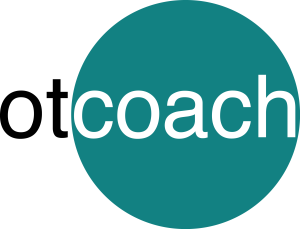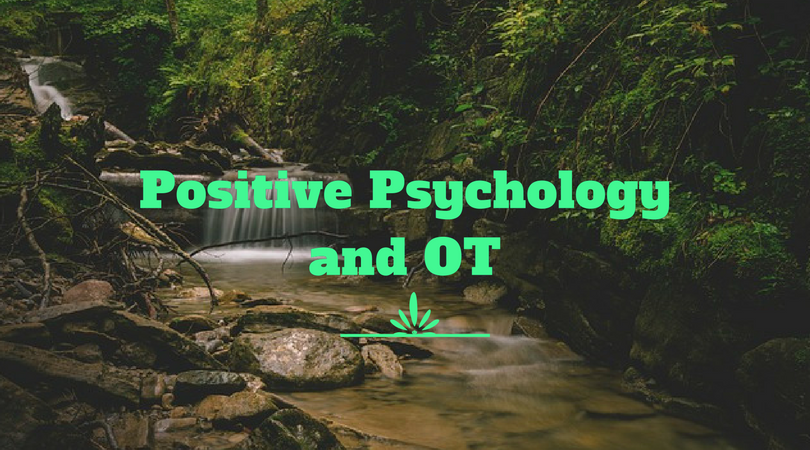Shifting away from a “deficit- conflict” approach can be hard for traditional therapists. Not only are we battling with our training which has often asked us to identify problems and place them at the cornerstone of our assessment, culturally our clients are all too well trained to identify what’s “wrong” them – we all are. As OT’s we are no exception, having a goodly dollop of medical model still flavouring our practice at times.
Positive psychology has at its heart, the language of strength and vision “coaches shift attention from what causes and drives pain to what energizes and pulls people forward. They follow the trail of dreams.” (Kauffman in Stober and Grant 2006).
Positive Psychology could provide much of the emerging evidence base for coaching and Occupational Science, showing how they both work, but what does the research actually say?
Kauffman clusters the positive psychology research into four main areas: 1) positive emotion and the powerful role it plays in personal and professional effectiveness 2) the concept of “flow,” the conditions that foster it and how coaches might use this information 3) the components of hope and effectiveness of hope therapy 4) the classification of strengths, the Values in Action survey.
Position Emotion
Fredrickson (2001,2002) has shown empirically that positive emotions helps us thrive and boost other psychological functions such as our ability to “widen the lens” and see the “big picture”. She has measured how positive emotion helps people broaden and strengthen their “momentary thought-action repertoires”. Positive priming leads directly to increased cognitive speed, flexibility and accuracy. In the physical body, positive emotions increase immune function, lower cortisol and impact on brain symmetry. Balance in this research has been provided by Losada who has clearly illustrated that there is an upper limit to the benefits of positivity, about 12 to 1 (12 positive thoughts to 1 negative) after which the responses can become rigid and unhelpful.
What makes people happy has been researched for over 30 years, with notable input from Csikszentmihalyhi and Diener. The popular belief that financial wealth leads to happiness has clearly been disproven. Certain events may shift our temporary sense of wellbeing, but other homeostatic forces bring it back over time. There is also a surprisingly low correlation between wellbeing and having our survival and security needs met! This calls into question the widely accepted hierarchy espoused by Maslow, does it not? All of this points to how our internal experience of our lives, events etc., creates our level of happiness, hence the importance of coaching to embed often small successes and shifting perspectives.
Finding Flow
Those of us who studied OT a long time ago, might not have encountered the hugely important body of work on the concept of “flow” that has surfaced in the last 20 years. To me, this is really what OT is about and we must embrace this fully in our practice, lest we become merely assessors of tertiary function. Small rant over…for nowJ
Being “vitally engaged” in one’s life, with a sense of purpose and meaning is at the heart of human wellbeing and Csikszentmihalyhi devoted his life to exploring this. This state of optimal living means to be fully involved in your life, moment by moment, good or bad. This state of “flow” means to be caught up in whatever you are doing, so completely, that time flies, hence the recent, increased interest in Mindfulness practice. Coaches help people recognise and work towards this state of flow. Herein lies rich learning for OTs who often work with clients to improve function and occupational performance.
Performance can be enhanced by: having healthy feedback, particularly internal; an absence of self-consciousness is extremely valuable as it helps us “let go” of over-thinking and over-trying; merging action and awareness helps the constant adjustment required for optimal learning – the coaching process helps raise this awareness and promote action; a sense of control of probability, not necessarily outcome!; helping find intrinsic rewards in what you are doing (and if it’s something you don’t want to be doing, finding it in other ways); a balance of skill and challenge, breaking down tasks (OT!). The last one is “time transformation” where heightening of perception and pure engagement lead to slowing down, but at the same time passing more quickly, paradoxically!. This state is perhaps reached when the other conditions of flow are obtained and are more difficult for us to coach/enable directly?
We will take a look at the other two main areas of positive psychology research next time, but in reading all this, did you want to shout “but that’s OT”? Depending on your area of practice and personal philosophy, maybe not, but the more I read about positive psychology, I think, YES, this finally shows what OT has known and been doing for the last 150 years or so!
Part 2
Hope can be difficult to muster, especially during sustained periods of ill-health, continued difficulties in work or relationships or a period of extreme stress. But hopefulness, is a key factor in maintaining physical and emotional wellbeing and research has shown this many times “individuals enjoy better physical health and have higher academic functioning, interpersonal effectiveness, athletic performance, psychosocial adjustment, capacity for emotional self-regulation, and superior abilities to face and overcome obstacles” (Snyder 2000). Wow, hope is really powerful! We should be teaching “hope” at school, should we not? Snyder’s research has resulted in the development of a 5 week hope training programme aimed at two key elements of hope: pathways thinking – the ability to find ways round a problem, generate different ideas etc and developing a sense of “agency” or self-efficacy, the belief that we can reach our desired goals.
Coaching helps with both of these elements: it helps develop “pathways thinking” (I love that phrase) in many ways, through the use of optioneering, brainstorming, use of resourceful states/perceptual shifts etc. Coaching also helps develop self-belief, through supporting the action-learning cycle, acknowledging success when it occurs and visualising desired success (experiential simulation to reduce fear!) and promoting fast-failure techniques when needed!
One of my favourite quotes from Chris Johnstone and Joanna Macy’s book “Active Hope” is “The ability to “catch” an inspiring vision is the(refore) key to staying motivated” (Johnstone and Macy 2012) and you can read a short article I wrote about hope here: http://ezinearticles.com/?Installing-Hope:-Why-The-World-Needs-Coaching-More-Than-Ever&id=7503962
As OTs we can employ these methods with ease in our work, even if we are not “coaching” in the pure sense of the word. If we hear our client expressing feeling of hopelessness, what do you usually do? Often we label it as poor motivation or lack of engagement in therapy. Do you believe that you can help build hope in a person?
I rarely let my coaching clients get away without doing a strengths assessment. Even if we roughly know what we are “good at”, doing a formal assessment such as the VIA (Values in Action) Strengths assessment (which you can do here for free) is a really liberating experience. I felt that I really started to understand myself much, much better. The assessment identifies your top 5 strengths out of a possible 24, which are clustered into 6 groups: Wisdom and Knowledge, Courage, Humanity, Justice, Temperance and Transcendence. If you just do one thing as a result of reading this newsletter, please take the time to do this assessment.
Coming back to evidence based practice again, the VIA assessment has been used for over 10 years now and subject to significant evaluation (look at the original reference below for details – its available online here: http://www.authentichappiness.sas.upenn.edu/questionnaires.aspx
As a coach, I help my clients use their strengths to a greater effect and help raise awareness that any actions taken, reflect their strengths and values…life gets much easier if we do this.
As an OT, I so wish I had understood this early in my OT life. I was trained to identify my clients problems, not strengths, but the more I coach, the more I see how further and quicker people progress when we use their strengths. It’s like adding fuel to an engine that is already primed to work well, rather than pouring fuel into an empty tank with a faulty starter motor. Brace yourself…lovely, loud motivational quote coming up:
“Masters focus on what they do best. They how they become masters. They stay in their zone… And the zone is what feels good. Damn good.” Danielle La Porte
References
Csikszentmihalyi, M. (1997). Finding flow: The psychology of engagement with everyday
life. New York: Basic Books.
Diener, E. (2000b). Subjective well-being: The science of happiness and a proposal for a national index. American Psychologist, 55(1), 34–43.
Diener, E., Emmons, R. A., Larsen, R. J., & Griffen, S. (1985). The satisfaction
with life scale. Journal of Personality Assessment, 49, 71–75.
Fredrickson, B. (2001). The role of positive emotions in positive psychology: The
Broaden-and-Build theory of positive emotions. American Psychologist,
56(3), 218–226.
Fredrickson, B. L., & Branigan, C. A. (2005). Positive emotions broaden the
scope of attention and thought-action repertoires. Cognition and Emotion, 19,
313–332.
Fredrickson, B. L., & Joiner, T. (2002). Positive emotions trigger upward spirals
toward emotional well-being. Psychological Science, 13, 172–175.
Fredrickson, B. L., & Losada, M. (2005). Positive affect and the complex dynamics
of human flourishing. American Psychologist, 60(7), 678–686.
Kauffman C (2006 )Positive Psychology: The Science at the Heart of Coaching Chapter 8 in Stober D and Grant A Evidence based coaching handbook
Losada, M., & Heaphy, E. (2004). The role of positivity and connectivity in the
performance of business teams: A nonlinear dynamics model. American Behavioral
Scientist, 47(6), 740–765.
Macy J, Johnstone C (2012) Active Hope: how to face the mess we are in without going crazy New World Library



One comment
I am an OT and a big advocate of positive psychology. I am a founding member of the International Positive Psychology Association. Are you aware of other OTs involved in positive psychology? Articles on OT & PP? Thanks for bringing PP into the OT world!
Marjorie